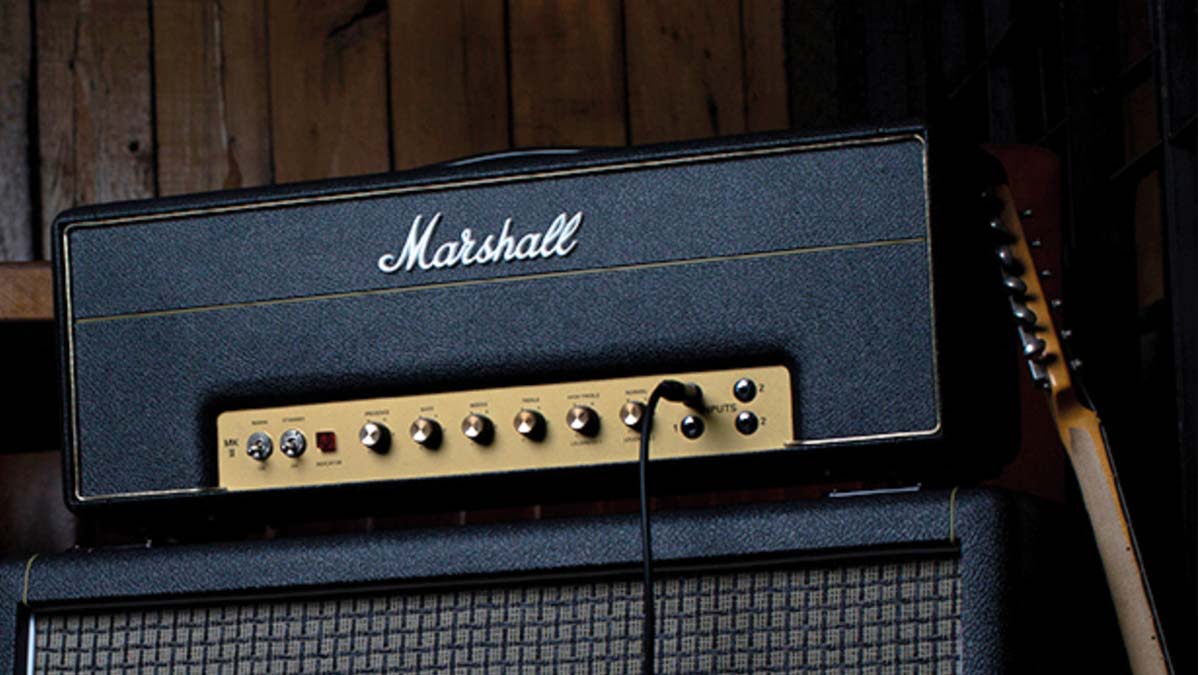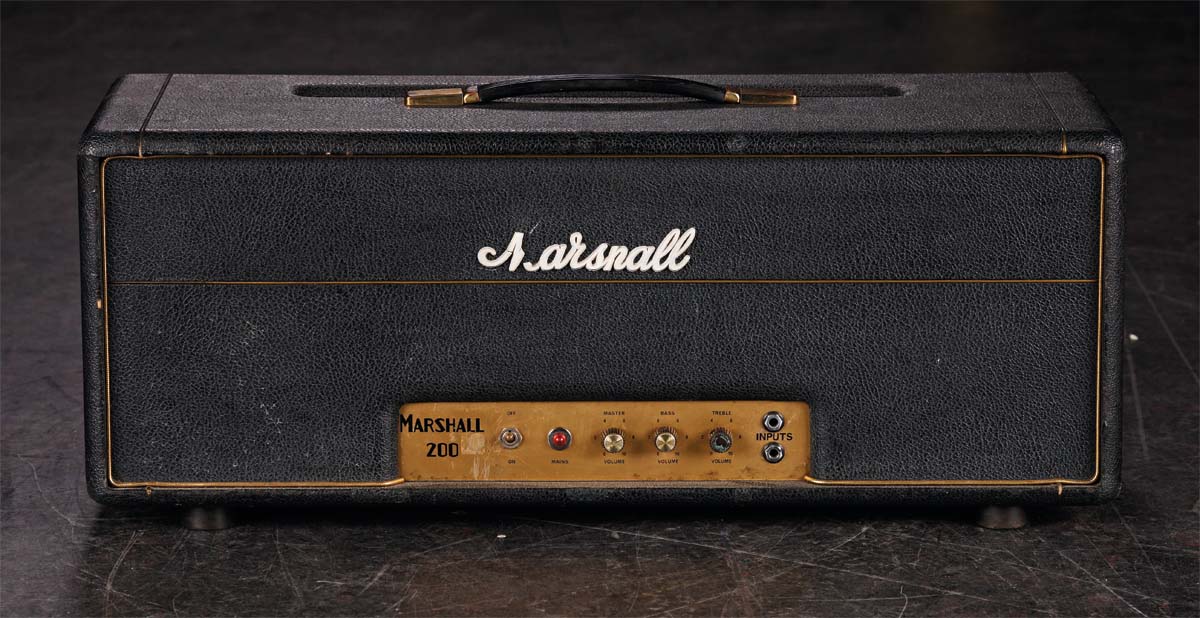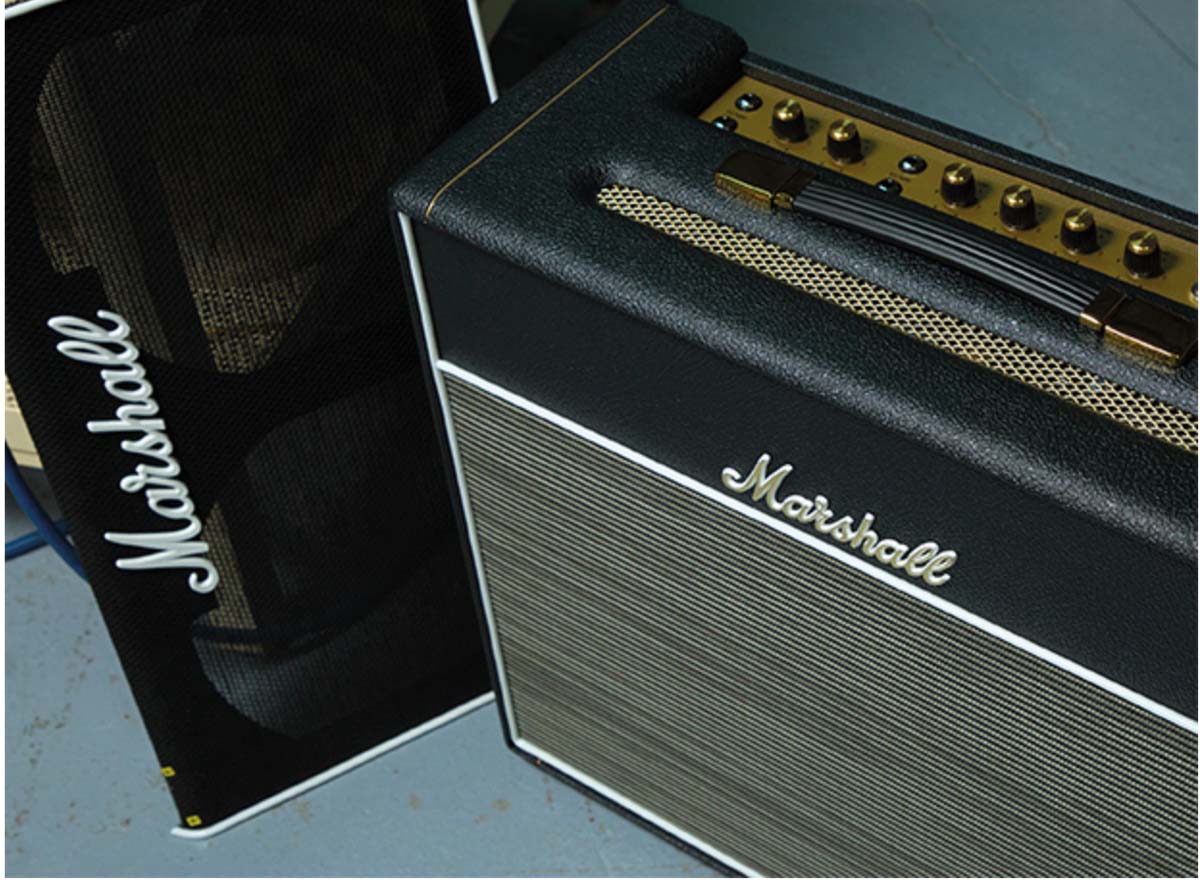Marshall Plexi guitar amps: everything you need to know
Marshall’s archivist and technical specialist Phil Wells on the amps that put power into flower power

Although Marshall has never released an amplifier under the ‘Plexi’ moniker, the term is still used to refer to amps from the latter half of the 60s that featured Plexiglas panels (notably the Super Lead model 1959).
“The term Plexi refers to the Plexiglas [acrylic] plastic panels we used during the 60s,” Marshall archivist Phil Wells tells us, “although we did carry on using them up until the early 70s.
“In the late 60s, we started to look at using aluminium panels, like we use today, because it was cheaper. The company who made the aluminium sheet covered it in the gold material and then screenprinted straight on top. Whereas with Plexiglas panels, we had to screenprint onto it, and then put the gold on the back, which took longer to do and cost more.
“You’ll see Plexiglas panels as late as ’73 because we had them in stock, and Jim [Marshall] wasn’t one for wasting, so we used them up on certain models before moving to the – now standard – aluminium exclusively. Over the years, we reissued certain models that look like the older amps but it’s a more modern material, not Plexiglas, which tends to go brittle over time.”
1987
“People often think of the JTM 45 when they think about a Plexi,” says Phil. “It’s like an earlier version of the 1987 with a valve rectifier. The JTM 45 came out in ’62 and was the first Marshall amp. It had four inputs – one channel for the lead guitar and another channel for the bass guitar.
“Nobody seemed to use it like that, however, and it was a popular thing for guitarists to link the channels with a patch cable to get a bigger range of sound. We took the JTM 45, changed the [GZ34] valve rectifier for a silicon [solid state] rectifier, standardised into using EL34s, and changed the mains transformer, which upped the power to 50 watts. EL34s were more readily available and gave us the punchy, overdriven sound we wanted.
“People sometimes ask, ‘Why is it called a 1987?’ and the answer is because that just happened to be the next number in the catalogue. These model numbers actually relate to the amp itself, not the year.”
Get The Pick Newsletter
All the latest guitar news, interviews, lessons, reviews, deals and more, direct to your inbox!
1967

”The original [200-watt] ‘Pig’ is a wonderful amplifier,” says Phil. “It gets its name from the piggyback frame design Jim produced in the late 60s. The amps have only two inputs and three knobs [Master, Bass and Treble] but the tone controls were active, so they could boost as well as cut frequencies.
”Those are rare amps because we soon started making ‘normal’-looking 1967s that looked like a 1959 with four inputs and six knobs: Presence, Bass, Middle, Treble, Volume I, and Volume II [from left to right].
“The Major, as it’s called, was a ‘major’ upgrade to the 100watt head. As well as the 1967 Lead head there was also the 1966 PA and 1978 Bass heads in the 200-watt range. Ritchie Blackmore was one player who loved his Marshall Majors. Funnily enough, Hendrix tried them but he felt he couldn’t push them hard enough. They would distort but not in the way he liked…
1974

“At the other end of the scale is the 1974, which is a nice 1x12 combo,” highlights Phil as he concludes this month’s quartet. “It has two channels, a tremolo and four inputs and was originally produced as a practice amp. The original 1974 came out in ’66 and was a little 18-watt 1x12 and lasted until ’68.
“In ’68 we got rid of the valve rectifier and put in a solid-state rectifier and it went to 20 watts. That version was manufactured from ’68 until it ceased production in the early 70s – although we reintroduced the 18-watt version with the tremolo in 2004 [the 1974X].
“There were also two other 18-/20-watt combo models and these were the 2x10 1958, and the 1973, which was a 2x12 model. People found the 1974 gave you a wonderful facsimile of a 1959 – that wonderful warm distortion. In fact, there was a [20 watt] head that was made from ’68 to ’73 called the 2061 that was designed to sound like a 1959.”
1959

“In the 60s, there were people like Pete Townshend saying that 50 watts wasn’t loud enough,” continues Phil, “so the designers took the 30-watt JTM 45 design, stuck two output transformers in, changed the [GZ34] valve rectifier to silicon solid-state rectification, and managed to get about 80 watts out of it. And people thought it was fantastic.
“From there, in 1966, they then designed an amplifier that had a 100-watt mains transformer and a bigger, more powerful 100-watt output transformer, and the 1959 Super Lead model was born.”
Marshall made music history in the space of a year, as Phil explains. “Within a matter of months, we went from a unit that was more or less two JTM 45s in the same box to a proper 100watt head.
“It was in-your-face and gave you that full sound you would never have got from a JTM 45. It was a completely different sound. Some guitarists couldn’t control it but Jimi Hendrix was one of the first to use a 100-watt head and he was a master at using them.”
Rod Brakes is a music journalist with an expertise in guitars. Having spent many years at the coalface as a guitar dealer and tech, Rod's more recent work as a writer covering artists, industry pros and gear includes contributions for leading publications and websites such as Guitarist, Total Guitar, Guitar World, Guitar Player and MusicRadar in addition to specialist music books, blogs and social media. He is also a lifelong musician.








![John Mayer and Bob Weir [left] of Dead & Company photographed against a grey background. Mayer wears a blue overshirt and has his signature Silver Sky on his shoulder. Weir wears grey and a bolo tie.](https://cdn.mos.cms.futurecdn.net/C6niSAybzVCHoYcpJ8ZZgE.jpg)

![A black-and-white action shot of Sergeant Thunderhoof perform live: [from left] Mark Sayer, Dan Flitcroft, Jim Camp and Josh Gallop](https://cdn.mos.cms.futurecdn.net/am3UhJbsxAE239XRRZ8zC8.jpg)
